





One of the most important plants in human history isn't an edible, however it has influenced civilization for thousands of years. Cotton has played an important role in many cultures and is still an economic asset even today.
While various species of cotton (the genus Gossypium) grow around the globe, it is generally accepted that it was first domesticated and grown as a crop in India. Several ancient historians BCE noted in their writings that the people of that region grew a plant that produced wool of better quality than sheep and the resulting cloth was exceedingly fine. The Indians traded with Asia and the Mediterranean countries and cotton cloth was a very desirable commodity.
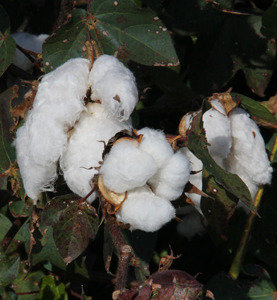 During the early part of the current era, many countries in that region started planting cotton and it was used for clothing, curtains, tents and many other items of the day. The Indians invented an early type of cotton gin that was powered by hand to remove the seeds, which streamlined the process of cleaning the cotton and allowed for more material to be ready to spin at a faster rate.
During the early part of the current era, many countries in that region started planting cotton and it was used for clothing, curtains, tents and many other items of the day. The Indians invented an early type of cotton gin that was powered by hand to remove the seeds, which streamlined the process of cleaning the cotton and allowed for more material to be ready to spin at a faster rate.
Cotton species also grew in the Americas and ancient scraps of woven cloth have been found in burial sites in South America that date to about the same time of the Indian cloth, but there was no evidence of farming or intentional domestication of the plant. Archaeologists can only assume that the cotton was gathered in the wild as the early peoples happened upon it. However, by the time the first European explorers came to the Caribbean in the 1500's, the native peoples were wearing cotton garments and actively cultivating it, as were the indigenous folk all over Mexico and the southwest U.S.
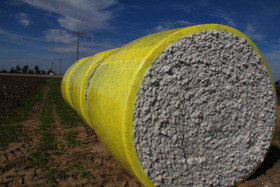 The seeds were still picked out by hand, which made the process tedious and time consuming. Slave children were usually given this job while their elders worked in the fields. The cotton grown in the Americas didn't work well with the Indian gin and it wasn't until Eli Whitney invented his machine in 1793 that the process of cleaning cotton was mechanized in the New World. Cotton cloth quickly became the cheapest cloth to produce and was in high demand world-wide.
The seeds were still picked out by hand, which made the process tedious and time consuming. Slave children were usually given this job while their elders worked in the fields. The cotton grown in the Americas didn't work well with the Indian gin and it wasn't until Eli Whitney invented his machine in 1793 that the process of cleaning cotton was mechanized in the New World. Cotton cloth quickly became the cheapest cloth to produce and was in high demand world-wide.
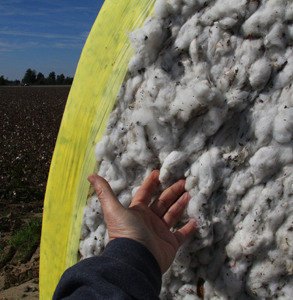 Cotton affects our lives in many ways. It is a natural fiber that doesn't irritate sensitive skin, so is the perfect choice for using around infants and small children. It has an enormous absorbency capacity, holding over 27 times its weight and is actually stronger when wet. This makes it ideal for medical and personal hygiene use. Not only is it an important item in clothing and medical fields, it is also used in book bindings, paper, fishnets and home furnishings.
Cotton affects our lives in many ways. It is a natural fiber that doesn't irritate sensitive skin, so is the perfect choice for using around infants and small children. It has an enormous absorbency capacity, holding over 27 times its weight and is actually stronger when wet. This makes it ideal for medical and personal hygiene use. Not only is it an important item in clothing and medical fields, it is also used in book bindings, paper, fishnets and home furnishings.
The seeds that are cleaned from the fluffy part we think of as cotton do not go to waste either. Cotton seed is high in protein and Vitamin E. It is a popular livestock feed and many ranchers consider it an ideal food for farm animals, especially those needing to produce milk for their young. Cottonseed meal is also a good way to amend clay soil. Many gardeners use it as mulch or till the meal into their gardens to improve the tilth.
Cottonseed oil is used in industry in the manufacture of soap, rubber, paint, cosmetics and pharmaceuticals. Many items used on the skin are made from cottonseed oil since very few people exhibit any sensitivity to it. Some foods, such as candy bars are even prepared with the oil since it is cholesterol free, high in poly-unsaturated fat and has a long shelf life.
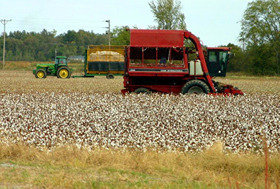 Cotton needs a long, hot summer to properly mature. Plant your cotton seeds in prepared ground when temperatures are above 60F (15.55C) and you'll need at least 120 growing days. This is a tropical perennial and likes hot weather, plenty of moisture, but good drainage. Cotton hates 'wet feet'. Those of us in cooler climate zones can grow cotton in containers. Just be sure to give it plenty of room as the root system is extensive. Its close relatives include hollyhocks and hibiscus.
Cotton needs a long, hot summer to properly mature. Plant your cotton seeds in prepared ground when temperatures are above 60F (15.55C) and you'll need at least 120 growing days. This is a tropical perennial and likes hot weather, plenty of moisture, but good drainage. Cotton hates 'wet feet'. Those of us in cooler climate zones can grow cotton in containers. Just be sure to give it plenty of room as the root system is extensive. Its close relatives include hollyhocks and hibiscus.
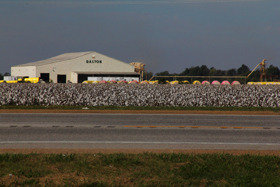 You can also start cotton indoors to transplant outside, but it grows quickly and can get root-bound in a hurry, so don't let it linger before transplanting. There are several seed vendors that offer cotton seeds for ornamental gardens and it is a fun way to show children where their clothes come from. If you're planning on growing cotton, please check with your local Extension Office to make sure that your area is not part of the Boll Weevil Eradication Program. This pest was so troubling at one time that it is illegal to plant cotton except in designated areas. The program has been very successful and this terrible pest has almost been eliminated because growers have followed the rules. Many southern states were included in this program, so it would be wise to make sure you are legal before starting plants.
You can also start cotton indoors to transplant outside, but it grows quickly and can get root-bound in a hurry, so don't let it linger before transplanting. There are several seed vendors that offer cotton seeds for ornamental gardens and it is a fun way to show children where their clothes come from. If you're planning on growing cotton, please check with your local Extension Office to make sure that your area is not part of the Boll Weevil Eradication Program. This pest was so troubling at one time that it is illegal to plant cotton except in designated areas. The program has been very successful and this terrible pest has almost been eliminated because growers have followed the rules. Many southern states were included in this program, so it would be wise to make sure you are legal before starting plants.
Cotton is one of the most important non-food crops grown in the world today and has an ancient and interesting history. Our lives would be much different if its uses had not been discovered and chances are, it will continue to amaze us with its versatility and significance.
Copyright © www.100flowers.win Botanic Garden All Rights Reserved